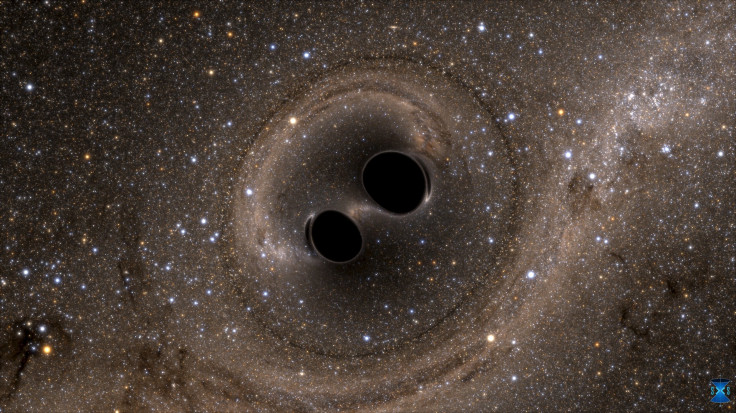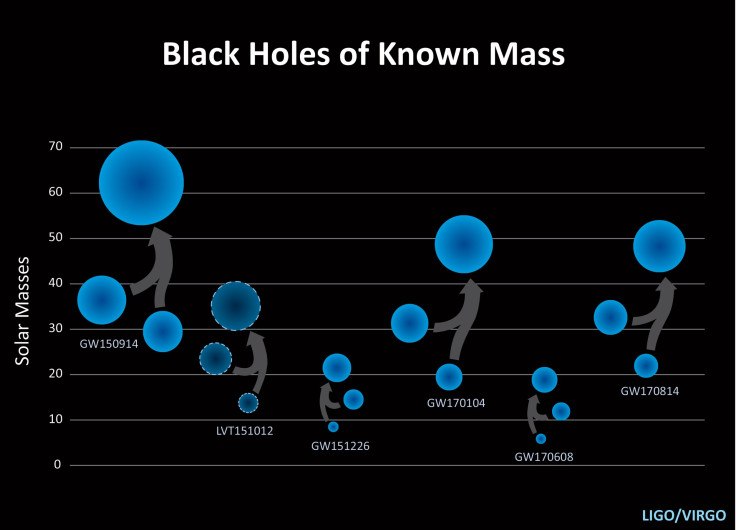LIGO, Virgo Announce Gravitational Waves Detected From Relatively Small Black Holes Merging

Insofar as gravitational waves go, 2017 has been an astounding year. Theorized about 100 years ago, their first detection was announced in February 2016, and four more have been announced since, three of them in 2017. On Wednesday, the LIGO and Virgo Scientific Collaboration announced yet another detection of gravitational waves, this time a result of two relatively small black holes merging.
The black holes involved in the collision — detected June 8 but announced Wednesday — were about seven and 12 times the sun’s mass, which is the smallest combined black hole mass for such an event known so far. The last announced detection of these ripples in space-time was actually smaller, in terms of mass and luminosity, but that was a merger between neutron stars.
In their announcement Wednesday, LIGO (Large Interferometer Gravitational-Wave Observatory) and Virgo said the event has been named GW170608, and that it occurred in a black hole binary system about one billion light-years from Earth.
Of the total 19 solar masses involved in the merger, mass equal to the sun was emitted as energy, and the black hole finally produced was 18 solar masses.
The “announcement was delayed due to the time required to understand two other discoveries: a LIGO-Virgo three-detector observation of gravitational waves from another binary black hole merger (GW170814) on August 14, and the first-ever detection of a binary neutron star merger (GW170817) in light and gravitational waves on August 17,” the statement said.

Gravitational waves, first predicted by Albert Einstein as part of his general theory of relativity, are caused when massive objects in space with strong gravity collide and merge. It is the strong gravity that distorts space-time and causes ripples to move across the universe at the speed of light.
Scientists are also planning to study gravitational waves caused due to the merger of supermassive black holes. These waves, being much stronger than those emitted from such events that have been detected so far, will have a much lower frequency. To detect such an event, our interferometers — even with improved sensitivity — will not suffice. Scientists will need another method, and a recent paper said using pulsars will allow them to find one within the next 10 years.
© Copyright IBTimes 2025. All rights reserved.





















